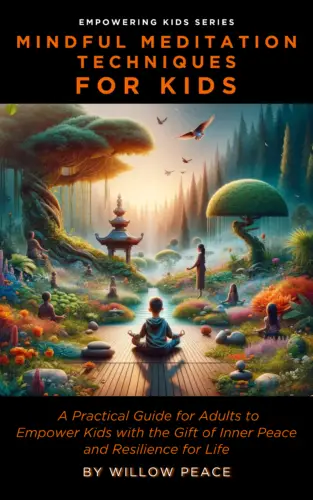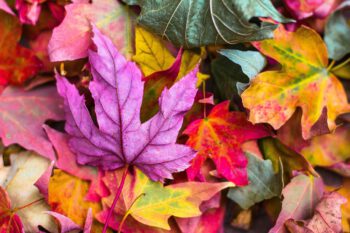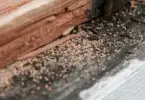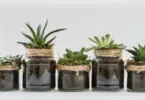By Oliva Wilson
Staff writer for Wake Up World
For many of us, fall conjures images of raking leaves, bagging them, and carting them off to the landfill. It’s a tradition ingrained in us, passed down as a necessary task to protect lawns from unsightly dead patches. However, what if removing leaves is robbing your yard of vital nutrients? Let’s explore how leaving the leaves can contribute to a healthier, greener yard and why skipping the rake could be one of the best things you can do for your soil.
The Myth of Raking Leaves
We’ve all heard, “Rake the leaves, or they’ll kill your grass.” This widespread myth has likely sold countless rakes, bags, and fertilizers. But is it true? According to experts, not really.
Dr. Thomas Nikolai of Michigan State University debunks this myth, stating that leaving the leaves on your lawn is “not only not a problem, it’s awesome.” When leaves are left to break down naturally, they provide crucial nutrients to the soil, acting as a free, organic fertilizer. Homeowners who rake away these leaves often find themselves buying synthetic fertilizers later to replenish what was already there naturally.
Why Fallen Leaves Are Good for Your Yard
Fallen leaves play an essential role in your yard’s ecosystem. As they decompose, they nourish the soil, creating a nutrient-dense environment that promotes healthy grass and plants. Leaves also contribute to healthy soil biology by feeding microbes crucial for plant life.
According to David Mizejewski, a naturalist with the National Wildlife Federation, “Fallen leaves offer a double benefit. They form a natural mulch that helps suppress weeds and, at the same time, fertilize the soil as they break down.” Instead of spending money on commercial mulch and fertilizer, you can use what nature provides for free!
Moreover, fallen leaves offer vital shelter and food to wildlife during the colder months. Insects, birds, and small animals rely on leaf cover to survive the winter. By leaving the leaves, you’re also supporting biodiversity in your backyard.
How to Use Leaves Effectively
While leaving leaves where they fall may seem like the easiest solution, it’s not always the best method. Thick piles of leaves can smother patches of grass and may become an eyesore. But don’t worry—there are multiple ways to harness the power of fallen leaves without sacrificing the look of your yard.
1. Mulch Your Lawn
One of the simplest methods is to mulch the leaves using a lawnmower. By mowing over the fallen leaves, you shred them into smaller pieces, allowing them to decompose faster and feed the lawn without suffocating it. Dr. Nikolai recommends this approach, emphasizing that “mowing over leaves to turn them into smaller pieces will enhance the lawn’s fertility.” You don’t need special equipment; even a basic mower will do the job.
2. Mulch Garden Beds and Trees
If you prefer a tidier lawn, rake the leaves into garden beds or around trees. Fallen leaves make excellent mulch, retaining moisture in the soil and regulating temperatures through the winter. Spread a thick layer of leaves in your garden to build soil fertility and protect plant roots.
3. Create Compost or Leaf Mold
Fallen leaves are an ideal addition to your compost pile. If you don’t have space for composting, consider creating leaf mold. Pile up leaves in a corner of your yard and let them sit over the winter. By spring, the bottom layers will have decomposed into rich soil that you can use as a natural fertilizer. This slow-composting method provides nutrient-dense material for your garden while keeping your yard tidy.
Practical Tips for Implementing Leaf Mulching
Here are a few tips to make the most out of your fallen leaves:
- Mow frequently in the fall: Start mulching leaves early in the season to prevent a thick buildup.
- Layer leaves: If you use them as mulch in garden beds, aim for a 3-6 inches thick layer.
- Mix with other materials: For compost, balance leaves with nitrogen-rich materials like grass clippings or food scraps.
- Use a leaf shredder: A leaf shredder or mulching mower can help break down leaves faster if your yard has many trees.
- Check local options: If you can’t use all your leaves, consider community leaf drop-offs for composting.
A Greener Yard, A Healthier Planet
Choosing not to rake and bag leaves contributes to a more sustainable approach to yard care. The National Wildlife Federation estimates that 33 million tons of yard waste are sent to landfills annually in the U.S. alone. Keeping leaves in your yard reduces waste, enriches soil, and promotes a healthier ecosystem.
The next time fall arrives, and you hear the rustle of leaves on the ground, remember that you’re hearing the sound of a healthier yard and a greener planet. Skip the rake, let nature take its course, and enjoy the benefits of a self-sustaining ecosystem in your backyard.
Article Sources
- “Composting to Kill Weed Seeds.” Texas A&M University.
- “Fall Leaves: To Leave or Not to Leave.” Clemson University.
- “Don’t Sweep Your Leaves to the Curb! Mulch Them Back into Your Lawn or Garden.” Michigan State University.
About the Author
Olivia Wilson is a passionate writer with a green thumb and a heart for healthy living. Through her articles, she aims to inspire others to cultivate vibrant gardens and nourish their bodies and souls through the power of nature. When she’s not tending to her garden or experimenting with new recipes in the kitchen, she can be found exploring local farmers’ markets or enjoying a peaceful hike in the great outdoors.
Most People Will Stay Stuck in 2025—Will You?
Most people will watch the world change and do nothing. But you? I bet you’re a bit like us—you see the writing on the wall. The system isn’t built for freedom, and waiting around for things to get better isn’t a strategy.
What do you know about building wealth outside the system?
If you’ve been looking for a way to break free from the grind and earn in a way that actually aligns with your values, you need to see this.
Inside this FREE masterclass, you’ll discover:
- A proven business model backed by a 50-year-old company
- A plug-and-play system—no chasing, cold messaging, or weird sales tactics
- A way to generate income while focusing on what actually matters
Most people will sit on this and do nothing. The good news? You don’t have to be most people.
Click here to watch now.
 If you’ve found value in our articles, we’d greatly appreciate your support by purchasing Mindful Meditation Techniques for Kids—A Practical Guide for Adults to Empower Kids with the Gift of Inner Peace and Resilience for Life.
If you’ve found value in our articles, we’d greatly appreciate your support by purchasing Mindful Meditation Techniques for Kids—A Practical Guide for Adults to Empower Kids with the Gift of Inner Peace and Resilience for Life.
In the spirit of mindfulness, we encourage you to choose the paperback version. Delve into its pages away from screen glare and notifications, allowing yourself to fully immerse in the transformative practices within. The physical book enriches the learning process and serves as a tangible commitment to mindfulness, easily shared among family and friends.
Over the past few years, Wake Up World has faced significant online censorship, impacting our financial ability to stay online. Instead of soliciting donations, we’re exploring win-win solutions with our readers to remain financially viable. Moving into book publishing, we hope to secure ongoing funds to continue our mission. With over 8,500 articles published in the past 13 years, we are committed to keeping our content free and accessible to everyone without resorting to a paywall.








